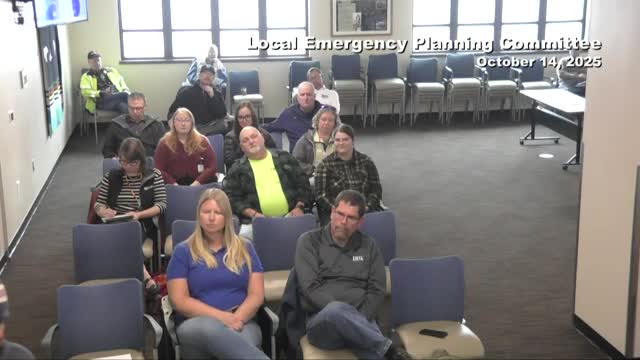Missoula details Community Wildfire Defense Grant work, BLM cost-share for home fuel reduction
October 14, 2025 | Missoula, Missoula County, Montana
This article was created by AI summarizing key points discussed. AI makes mistakes, so for full details and context, please refer to the video of the full meeting. Please report any errors so we can fix them. Report an error »

Tim LaRoche, Missoula County wildfire mitigation staff, briefed the committee on wildfire grants and community fuel-reduction projects on Oct. 14.
LaRoche said the county received a Community Wildfire Defense Grant of about $4.8 million and has spent roughly $700,000 to date while assembling a four-person team to implement the work. The CWDG funding supports countywide vegetation-management projects outside a few excluded communities (he said Lolo, Frenchtown and Clinton were not included in the countywide portion due to U.S. Forest Service grant decisions).
BLM cost-share and homeowner participation
LaRoche described a BLM cost-share program that uses a 75/25 split: the county pays 75 percent of vegetation management around structures, and homeowners pay 25 percent. He said the program is intended to engage and educate homeowners about reducing home-ignition risk in the home ignition zone immediately surrounding structures.
Planning and next steps
The CWDG also funds an update to the county’s Community Wildfire Protection Plan (CWPP); a contractor has been hired and a kickoff is expected soon. LaRoche said another county award — a $1.2 million community wildfire defense grant granted to a county partner (referred to during the meeting) — will help fund planning work, and he described the grants collectively as enabling a voluntary program at present with a potential future regulatory framework under local lands and communities authorities.
Why it matters
LaRoche said the combined grants aim to complete a cycle from voluntary homeowner engagement and fuel reduction to broader planning that could support more formal mitigation actions. He asked partners to expect outreach and to participate in planning and implementation discussions.
LaRoche said the county received a Community Wildfire Defense Grant of about $4.8 million and has spent roughly $700,000 to date while assembling a four-person team to implement the work. The CWDG funding supports countywide vegetation-management projects outside a few excluded communities (he said Lolo, Frenchtown and Clinton were not included in the countywide portion due to U.S. Forest Service grant decisions).
BLM cost-share and homeowner participation
LaRoche described a BLM cost-share program that uses a 75/25 split: the county pays 75 percent of vegetation management around structures, and homeowners pay 25 percent. He said the program is intended to engage and educate homeowners about reducing home-ignition risk in the home ignition zone immediately surrounding structures.
Planning and next steps
The CWDG also funds an update to the county’s Community Wildfire Protection Plan (CWPP); a contractor has been hired and a kickoff is expected soon. LaRoche said another county award — a $1.2 million community wildfire defense grant granted to a county partner (referred to during the meeting) — will help fund planning work, and he described the grants collectively as enabling a voluntary program at present with a potential future regulatory framework under local lands and communities authorities.
Why it matters
LaRoche said the combined grants aim to complete a cycle from voluntary homeowner engagement and fuel reduction to broader planning that could support more formal mitigation actions. He asked partners to expect outreach and to participate in planning and implementation discussions.
View full meeting
This article is based on a recent meeting—watch the full video and explore the complete transcript for deeper insights into the discussion.
View full meeting
